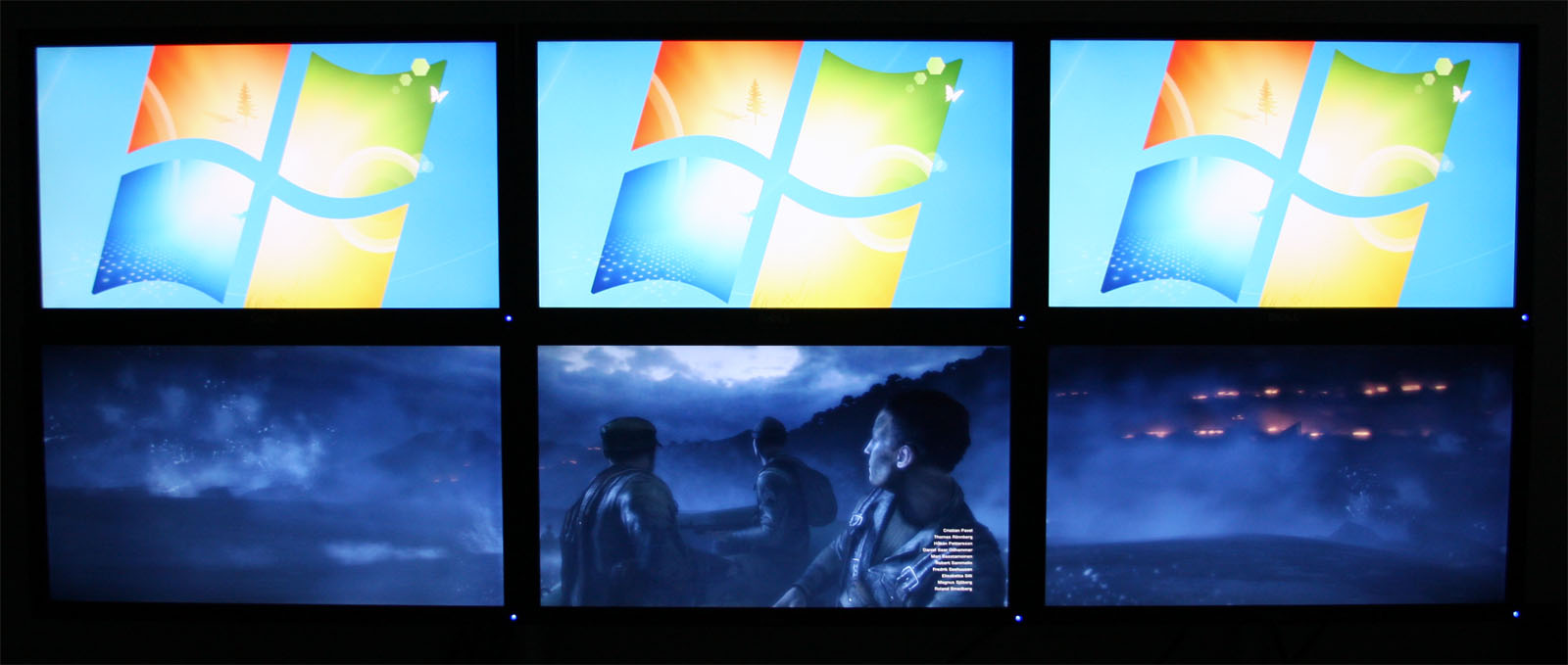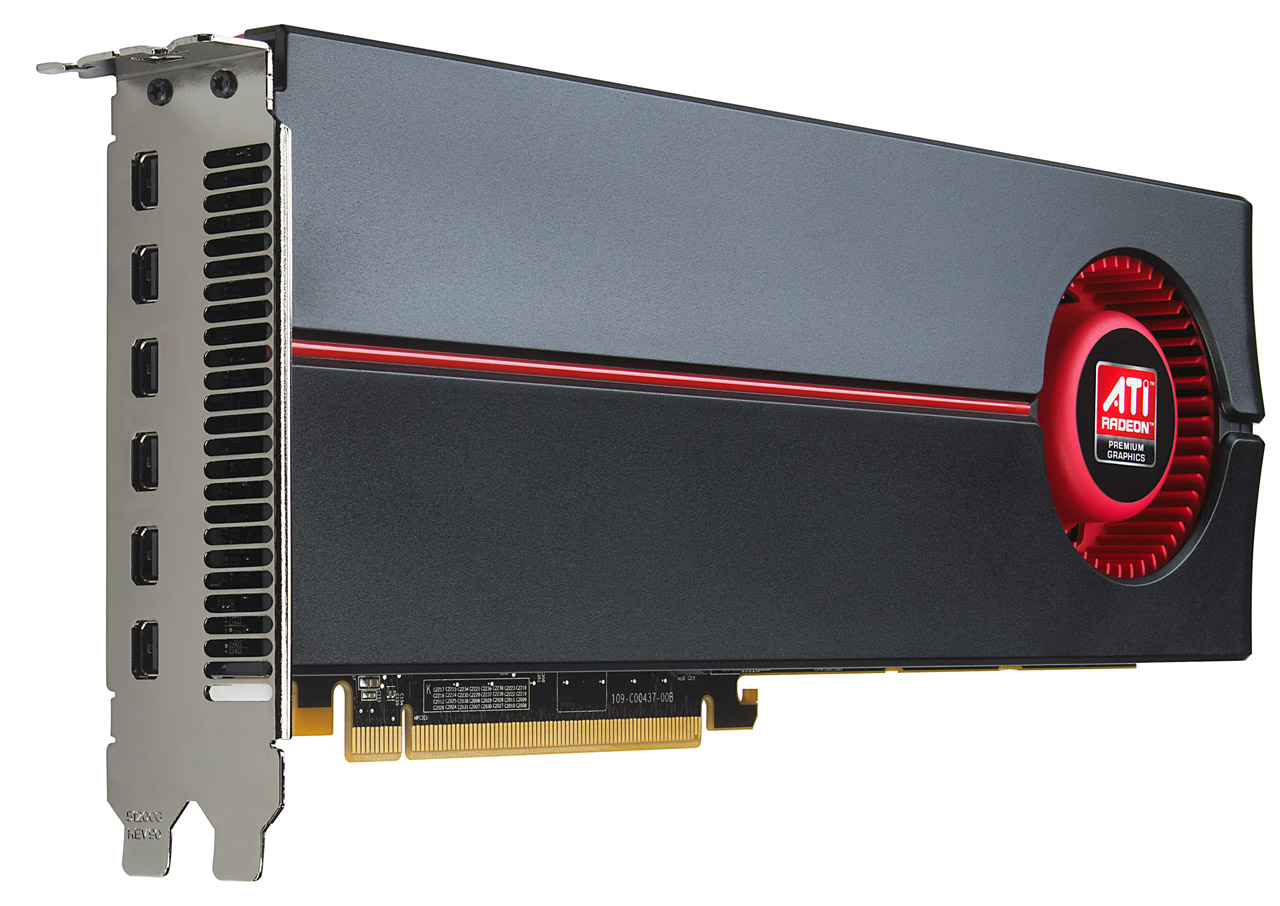AMD Radeon HD 5870 Eyefinity 6 Edition: One Card, Six Screens
Conclusion
Surely, the Radeon HD 5870 Eyefinity 6 Edition is a specialty product, aimed at the few folks out there willing to “go big” on displays. Its competitive position is made that much stronger by the fact that Nvidia’s flagship maxes out at two simultaneous outputs.
Despite the fact that this card comes six months after the Radeon HD 5870 launch (and indeed leverages the same technologies we’ve praised in the last half-year), its feature set remains cutting-edge. All is not perfect here, though. By itself, the idea of Eyefinity 6 is enthralling. But factor in the rest of the multi-monitor ecosystem and you’re left a little less enchanted.
AMD’s partnership with Samsung sounded like a fantastic move last September, and we’re disappointed that the fruits of that collaboration haven’t yet materialized. When they do, a Radeon HD 5870 Eyefinity 6 / single-stand, six-display Samsung setup will represent the ultimate in six-display aesthetics. It remains to be seen how the PVA-based screens perform, though. To its credit, AMD has tried on several occasions to provide us with ETAs on the Samsung screens. But after multiple delays, it’s no longer willing to try pegging availability.
In the meantime, these Dell P2210Hs are a bit of a tease. I can almost get them lined up perfectly, but not quite. The inch and a half of bezel in the middle of the screen is almost enough to make me want to try playing the latest first-person shooters in the lab, but not quite. I want so very badly to tell you that this is the coolest thing I’ve ever had on a desktop, and that you should go out and buy a setup right now. But I won’t, at least not yet.
Knowing how much all of this gear costs, as a package, I can’t help but think that a display setup able to match the elegance of the Eyefinity 6 card is needed to make it all worthwhile.
While I can see myself using six monitors for productivity-oriented tasks, I, personally, cannot game with 1.5” of bezel spanning the entire 3x2 arrangement. I’m a competitive person. Like 50 Cent, I don’t like getting shot (even if it’s just in a game). The P2210H setup currently in the lab gives up too much playable real estate to the bezel, and it’s distracting. I am, however, hoping that Samsung’s thin-bezel array is the solution.
Perhaps more realistic is a dual display group setup, where your top three monitors are devoted to productivity and the bottom three are used for gaming. In this config, all of the action is centered on your middle display. It’s much more playable, to be sure. And if six display outputs are a must have for business reasons, AMD’s Radeon HD 5870 Eyefinity 6 card is the only game in town.
Get Tom's Hardware's best news and in-depth reviews, straight to your inbox.
Of course, the Radeon HD 5970, 5870, and 5850 are also viable options if you’re going the 3x1 route. One gigabyte of memory per GPU won’t hurt the performance of these cards until you start cranking up the anti-aliasing. And even then, you’ll want to consider Eyefinity 6 cards in CrossFire to keep the frame rates playable.
AMD is claiming immediate availability. We’ll be keeping our eyes on the channel and updating Best Graphics Cards For The Money accordingly. But you probably shouldn’t rush to buy the Radeon HD 5870 Eyefinity 6 Edition right away (especially if six-monitor gaming is your Holy Grail). Let’s see how Samsung’s hexa-display array improves the experience first. Right now, there’s just too much bezel in the way.
On the other hand, if you can’t wait to get your hands on this card for what it’ll do for your financial charts, IT management console, or desktop productivity workflow, then congratulations, this is probably the first high-end 3D board you’ve ever considered for business computing.
-
phantomtrooper I would hate playing with that much black area between screens. I will stick with my 1080p monitor thank you.Reply -
megamanx00 Glad they compared the 1GB and 2GB cards in a 3x1 setup. Glad I got my 5870 instead of waiting for a 2GB card :D. Even so, I want some thin bezel monitors before I hook up three of them. The bezel on my HP LCD is just to think so I'm not keen on buying another two.Reply -
duk3 http://www.newegg.com/Product/Product.aspx?Item=N82E16814125322&cm_re=5870-_-14-125-322-_-ProductReply
Immediate availability? Yes.
Even in stock! (When linked :P ) -
ltcommander_data So I guess Apple's miniDP connector is quite useful after-all and is now seeing adoption outside of Macs.Reply
It's too bad you didn't test GTA IV like you used to do. I believe GTA IV at max settings exceeds 1GB of VRAM usage so perhaps 2GB graphics cards may be of some use assuming the game isn't still CPU limited despite 12 threads with the Core i7 980X. At the very least, I'm guessing Liberty City at 6048x2276 would be amazing. -
oldscotch Obviously, the best solution is a 3x3 grid of displays to make sure your centre focus is not interfered with.Reply
Lesse, that'd be 5760 x 3240.
No sweat ;) -
So, I guess if you already have a 1GB 5870 and 3x1 Eyefinity setup, the only advantage of the 2GB version is being able to pile on the AA/AF effects and still have a playable frame rate.Reply


